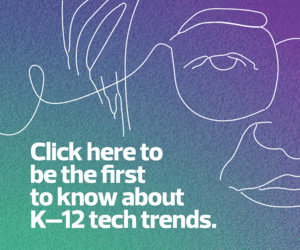The Intricacies of a High School Student’s Virtual School Day
On a typical virtual school day, I would wake up five minutes before class and join the Google Meet while sitting in my bed. Depending on the day, I would either have to do an assignment in class or I would bring my computer into my kitchen and make breakfast.
My teacher had us turn on our cameras only when we were doing an assignment, so she could see if we were actually doing it. Typical assignments for art, my first period class, were watercolor projects or working on shading. If I had to do an assignment during first period, I would wait until after class to make breakfast because we had fifteen-minute breaks between classes.
Then I would go to my second period class, which was piano. Almost every week we would learn a new song and have to perform it in class. My third class was history, which was always fun because my teacher was very nice, and she would sometimes play music from the decade we were learning about. My history teacher always made sure to answer everyone’s questions during class, and she actively wanted to get to know us.
MORE ON EDTECH: What does the flipped classroom look like in today’s K–12 school?
I had a lot of friends in that class, so I could talk to them for the class discussion about the assigned topics. It was also easier for me to ask them questions, because teachers would get emailed all the time. It was the only way to communicate with them one-on-one while virtual. That said, most of my teachers replied to emails relatively quickly.
Then I would go to health and PE. On days that we had PE, my teacher usually had us do a workout. We would either have to turn on our camera or record the workout and submit it via our LMS.
Virtual Learning Offers Flexibility at the Risk of Disconnection
There were a lot of reasons I liked virtual learning. I liked it mostly because it allowed me to multitask. For example, I could clean my room or make food while listening to my teacher.
I made sure I was still engaged in class while doing other things, although it didn’t always seem like other students were as focused. I also noticed that because I had so much time throughout the day to get things done, after school I would be so bored that I would want to do my homework.
Virtual learning also gave me a ton of flexibility when it came to visiting family. My grandparents live one state over, so we could spend an extra week with them during Christmas break, and I was able to visit my mom and brothers over the summer much earlier than usual because I could join my class from anywhere.
RELATED: Asynchronous learning gains popularity among K–12 students.
However, I disliked the virtual model because I wasn’t learning as well as I did in person. It was harder to communicate with teachers, and some teachers didn’t adjust their lesson plan to fit virtual learning. Some of my assignments, made prior to virtual learning, involved a lot of group work, which was always difficult to do on Google Meet.
On top of that, my area had a few Wi-Fi and power outages, and on those days everything was confusing. On the bright side, though, if the power didn’t come back on in time, we had the day off. Because these were the only days we had off, we didn’t have to make up any days at the end of the year.
Classrooms Become Virtual Learning Hubs in a Hybrid Model
While the first semester of the 2020-2021 school year was all virtual, it switched midway through the second semester. The school offered hybrid learning for those who wanted to do it.
When I switched to a hybrid model, I was still mostly learning virtually. I was only allowed to go in on Mondays and Tuesdays, and I usually would. I found myself being more productive during class and doing my homework during the school day instead of after. It was also fun getting to know my second-semester teachers.
In my opinion, though, there wasn’t a noticeable benefit to hybrid learning because it was the same process as virtual learning except in a school setting. We still had to join the Google Meet because some students were at home. Unfortunately, we had a lot of audio issues with this model. The students in the classroom would often forget to turn off their volume or mute their mics. So, the only difference was that we were in person with our teachers instead of faces on a screen.
Virtual and hybrid learning both have pros and cons in my experience, but I definitely like the flexibility virtual learning offers.










